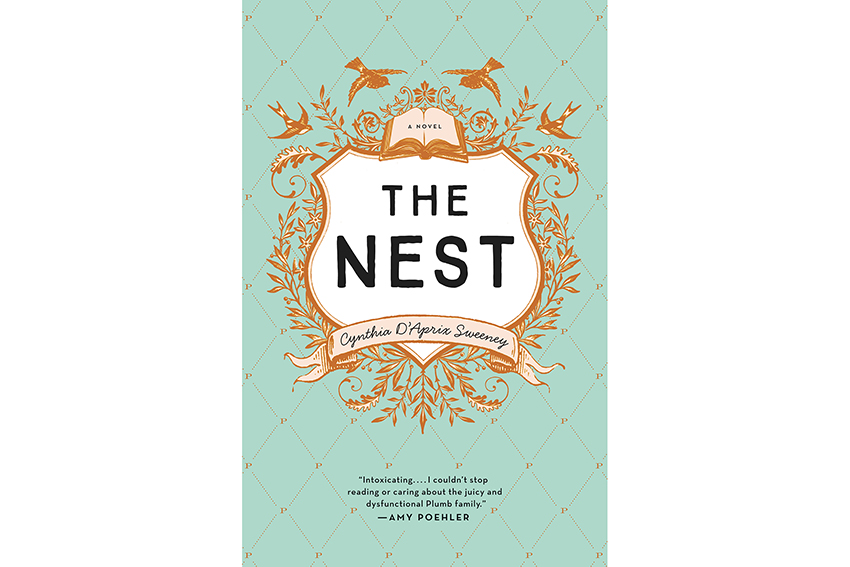One car crash, and Leo Plumb’s family’s entire fortune is at risk — not that he necessarily cares. Hyped up for months by celebrities such as Amy Poehler and Ellie Kemper, Cynthia D’Aprix Sweeney’s debut novel “The Nest” is an emotional and satisfying story of family drama and dysfunction.
In various bars around Manhattan, three siblings, Jack, Melody and Bea, drink alone, bracing themselves before meeting one another for lunch. The Plumb family has been eagerly awaiting their late father’s inheritance money, but that’s all threatened by their brother Leo’s scandalous car accident.
Right before the accident, Leo — amped up on drugs at the time — leaves his cousin’s wedding with a waitress. Not long after seducing the server, Matilda, and promising to connect her with an agent to launch her singing career, he crashes the car.
The crash is devastating and becomes a source of shame for Leo and his family. This inciting incident sets the stakes high for the novel, giving it momentum. Never mind the uncomfortable 27-year age gap between Leo and Matilda, his wearisome history of addiction, or the fact that he’s married; the crash is so traumatic that the 19-year-old server loses her foot. In order to save face, Leo’s mother uses part of her children’s inheritance to pay off Matilda’s family.
The siblings’ indignant response to their mother’s decision makes it immediately clear that the Plumbs are not the ideal picture of familial closeness.
At lunch, the Plumb siblings await Leo’s arrival, discussing how they will convince Leo to pay back their inheritance, what they call “The Nest.” They are bitter, all heavy with their own burdens, and have grown impatient with Leo’s selfishness negatively impacting theirs. They half expect him not to show; they half hope he won’t.
But when Leo arrives, it’s like a miracle. The siblings are equal parts relieved and distressed, impressed and irritated.
Leo’s character is defined by his egotism, and his family is obtusely aware of it. Each sibling has his or her own misconstrued hope for who he can be, shaped by younger, fonder memories of him. And while Leo is deeply flawed, he can also be charismatic, funny, intelligent and deeply loving. He’s a walking paradox — in one moment he’s either the hero or the villain, never in between.
Throughout the course of the novel, each sibling comes to see Leo as their greatest weakness. Neither Leo’s absence nor presence is a source of reassurance for them, and Leo struggles to decide between being honorable and paying back his family, or being cowardly and fleeing. Both potential outcomes are ones his siblings have considered and have difficulty accepting.
All of the Plumbs are imperfect, but the narrative’s hyper-conscious acknowledgment of this fact saves the narrative from burning out after its initial momentum. Bea, Melody, Jack and even Leo are distinctly likable characters. The depth to which Sweeney writes each character fleshes them out so well that the reader is overjoyed and heartbroken for each of them in the end.
Sweeney weaves their perspectives together seamlessly, painting a heartbreaking, multi-faceted portrait of a family that feels very real. Although the perspectives are initially a little jarring and names and details are presented too quickly, the slow build-up reaches a climax with an ending that both satisfies and hurts.
“The Nest” makes a powerful statement re-imagining the role of family and the responsibility we have to the ones we love.
“The Nest”
Length: 353 pages
Rating: 4.5/5















